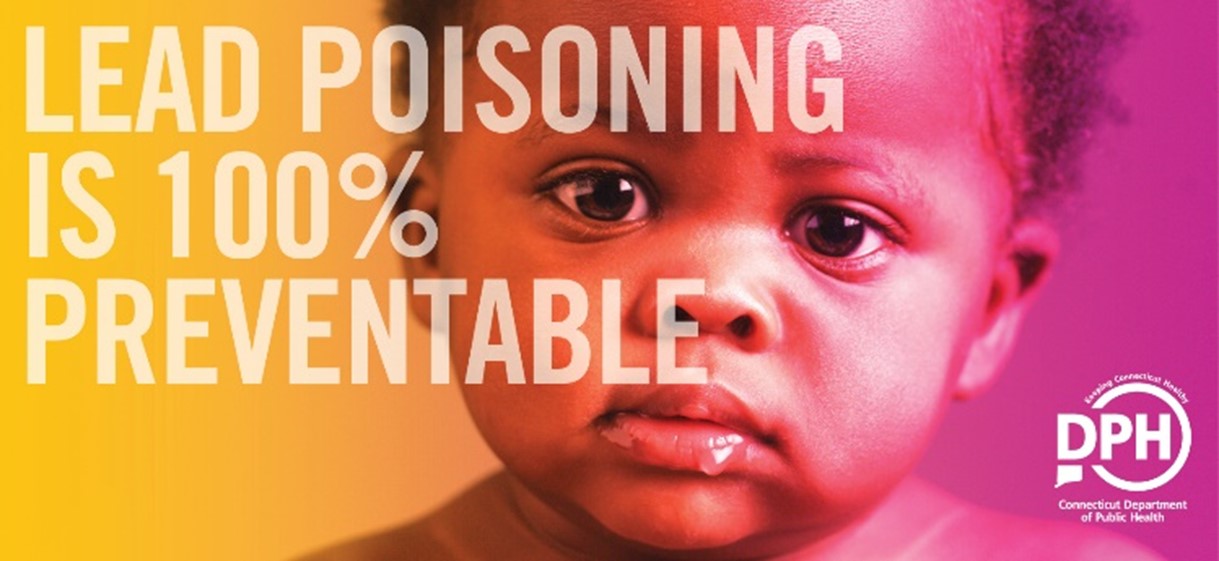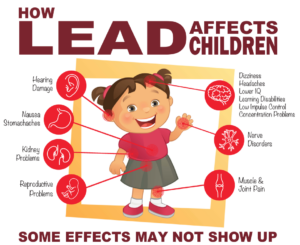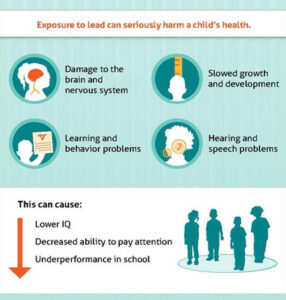Lead
Sign up now for our FREE lead abatement and renovation, repair and painting certification classes.
By successfully completing these classes you can become a certified lead abatement contractor and/or a renovation, repair, and painting certified in lead removal.
Lead abatement classes are five days from beginning May 13-17. The RRP course is a one-day, eight-hour class on May 18.


Lead Safe Web Resources Include
 Childhood lead poisoning is the most common environmental disease of young children. Lead poisoning can cause a series of health problems in young children including learning disabilities, hyperactive behavioral problems, coma, convulsions and even death.
Childhood lead poisoning is the most common environmental disease of young children. Lead poisoning can cause a series of health problems in young children including learning disabilities, hyperactive behavioral problems, coma, convulsions and even death.

Children six-years-old and younger are at greatest risk for lead poisoning due to their rapidly growing bodies and the tendency to put their hands or other objects, which may be contaminated with lead dust, into their mouth. Since symptoms rarely show, the only way to confirm if a child has lead poisoning is through a blood test.
Parents and/or guardians should talk to their child’s healthcare provider about a lead blood test. During a blood lead test, a small amount of blood is taken from the finger, heel, or arm and tested for lead.
 Deteriorating lead-based paint is the number one source of childhood lead poisoning. Lead-based paint is present in millions of Ohio homes because most homes in Ohio were built prior to 1978, when lead in house paint was banned by the federal government. Lead based paint is hazardous when found on surfaces that children can chew or that get a lot of wear-and-tear, such as windows, windowsills, doorframes, baseboards, stairs, porches, and the exterior of houses.
Deteriorating lead-based paint is the number one source of childhood lead poisoning. Lead-based paint is present in millions of Ohio homes because most homes in Ohio were built prior to 1978, when lead in house paint was banned by the federal government. Lead based paint is hazardous when found on surfaces that children can chew or that get a lot of wear-and-tear, such as windows, windowsills, doorframes, baseboards, stairs, porches, and the exterior of houses.
 Clark County Healthy Homes and Childhood Lead Poisoning Prevention work together to make (High Efficiency Particulate Air) HEPA filter vacuums available for county residents at no cost. Industrial HEPA vacuums are specifically designed to capture hazardous materials such as lead dust particles at 99.97% efficiency.
Clark County Healthy Homes and Childhood Lead Poisoning Prevention work together to make (High Efficiency Particulate Air) HEPA filter vacuums available for county residents at no cost. Industrial HEPA vacuums are specifically designed to capture hazardous materials such as lead dust particles at 99.97% efficiency.
 Answers to Frequently Asked Questions about the dangers of lead exposure.
Answers to Frequently Asked Questions about the dangers of lead exposure.
 A list of lead-related resources for parents, healthcare and childcare providers, landlords, tenants, and more.
A list of lead-related resources for parents, healthcare and childcare providers, landlords, tenants, and more.
Research shows NO amount of lead exposure is safe for children. Even low levels of lead in blood have been shown to affect learning and academic  achievement. Lead can damage nearly every system in the human body and has harmful effects on both adults and children. The most concerning aspect of lead poisoning is that children may display no signs or symptoms of being lead poisoned; only a blood test. Visit our Lead Testing page for more information.
achievement. Lead can damage nearly every system in the human body and has harmful effects on both adults and children. The most concerning aspect of lead poisoning is that children may display no signs or symptoms of being lead poisoned; only a blood test. Visit our Lead Testing page for more information.
Lead exposure occurs when a child comes in contact with lead by touching, swallowing, or breathing in lead or lead dust. Evidence shows that childhood exposure to lead can cause long-term harm and the effects of lead exposure may be permanent. But if caught early there are things parents can do to prevent further exposure and reduce damage to their child’s health.
Research shows early interventions can improve academic outcomes for lead-exposed children. Lead poisoning is a disability. Lead poisoned children are eligible  for special education services from any public or private school attended.
for special education services from any public or private school attended.
The most important step that parents and caregivers, healthcare providers, and the community can take is to prevent lead exposure before it occurs.
The Clark County Combined Health District (CCCHD) advocates primary and secondary lead exposure prevention.
Primary prevention is the removal of lead hazards from the environment before a  child is lead exposed. It is the most effective way to ensure that children do not experience harmful long-term effects of lead exposure.
child is lead exposed. It is the most effective way to ensure that children do not experience harmful long-term effects of lead exposure.
Secondary prevention includes blood lead testing and follow-up care and referral. Testing children’s blood for lead is an essential safety net for those who may already be exposed to lead.
Ohio law requires primary health care providers to administer blood lead tests to: 1) ALL Medicaid children at age one and two, 2) children less than six years of age living in identified high risk zip codes, and 3) children ages three to six not previously tested.
The Ohio Department of Health determines high-risk zip code areas. The high-risk designation indicates children and adults living within that area are at increased risk of lead exposure. Unfortunately, all City of Springfield zip codes are classified as high-risk. Clark County high-risk zip codes include: 45502, 45503, 45504, 45505, 45506, 45324, 43078, 43140, and 45387.
Lead exposure in children is often difficult to see. Most children have no obvious immediate symptoms. If you think a child may have been exposed to lead, talk to their parent or guardian and suggest they talk to the child’s healthcare provider about getting a lead blood test. Lead blood testing is available at the Clark County Combined Health District and the procedure only takes 20 minutes! Lead blood testing is free for Medicaid recipients and many private insurance policies cover the cost.
To learn more about lead blood testing, and to schedule a lead blood test for you or your child, call 937-390-5600 or visit our Lead Testing page.
The GOOD news is lead poisoning is 100% preventable and eliminating it is everyone’s responsibility!
 Renters & Landlords
Renters & Landlords
Renters: Looking for lead-safe or lead-free rental units in the area? Click here to access the Ohio Lead-Safe/Free Registry. Once there, scroll down a bit for easy directions on using the registry.
Landlords: Want to add your rental unit(s) to the Ohio Lead Safe/Free Registry? Click here to learn about the registry and how easy it is to get your rental units added.
- 1-877-428-8844 (Toll-free)
- info@myhousingsearch.com

 A number of local, state, and federal resources are available for lead prevention.
A number of local, state, and federal resources are available for lead prevention.